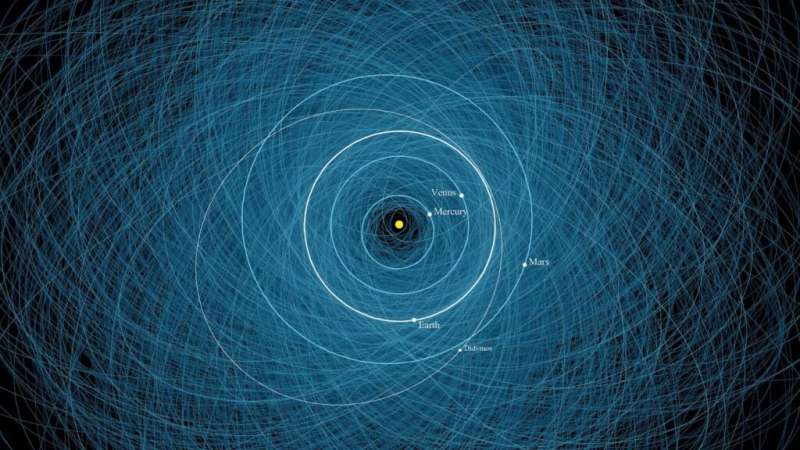Astronomers prepare for the next 1,000 years of hazardous asteroid impacts

It is as inevitable as the rising of the sun and the turning of the tides. Someday another large rock from space will crash into the Earth. It has happened for billions of years in the past and will continue to happen for billions of years into the future. So far humanity has been lucky, as we have not had to face such a catastrophic threat. But if we are to survive on this planet for the long term, we will have to come to terms with the reality of hazardous asteroids and prepare ourselves.
Organizations around the world continue to monitor the skies. They are creating maps and catalogs of all potentially hazardous near-Earth objects, or NEOs. Obviously the larger rocks pose a bigger threat, but thankfully they are less numerous. And while our census of hazardous NEOs is not nearly complete, we do have reliable maps of nearly all of the potentially hazardous asteroids larger than a kilometer across.
This is useful, to say the least, because kilometer-scale asteroids have the potential to not only wipe out entire cities, but could cause significant ecological harm across the globe.
To estimate the risk that these large NEOs pose, a team of astronomers have predicted their orbits over the next thousand years. Their analysis, available on the pre-print server arXiv, suggests that none of these kilometer-scale NEOs pose a significant risk to us over the next century. However, we have difficulty predicting the orbits of these NEOs past that. This is because in orbital dynamics small changes can lead to big effects over enormous timescales. A slight difference in the amount of heating that an asteroid receives from the sun, or an unexpected tug from Jupiter, could send an asteroid on a trajectory that in a few thousand years ends up intersecting the Earth.
The astronomers studied the closest possible encounter between the known hazardous NEOs and the Earth. They particularly examined how this closest distance changes over the course of hundreds and thousands of years. They did this through a series of simulations that mapped out as many possible orbital trajectories as possible given uncertainties in the current orbital positions and velocities of the NEOs.
The astronomers identified one particular NEO, Asteroid 7482, as especially hazardous. This asteroid will spend a significant amount of time near the Earth for the next millennium. While that doesn’t necessarily mean that it will strike our planet, it does mean that this rock poses the greatest chance of a collision within the next thousand years. The researchers also highlighted another asteroid, Asteroid 143651, that has such a chaotic orbit that it’s impossible to predict its exact position past a few decades. Thus while might or might not pose a threat at all, based on our current understanding of its position and its velocity we cannot say for certain.
Altogether the astronomers identified 28 candidates that have a non-zero probability of a “deep encounter,” which means they will pass within less than the distance to the moon. None of these objects may hit the Earth in the next hundred or a thousand years, but if we are to survive long-term, we definitely need to pay attention to them.
More information:
Oscar Fuentes-Muñoz et al, The hazardous km-sized NEOs of the next thousands of years, arXiv (2023). DOI: 10.48550/arxiv.2305.04896
Citation:
Astronomers prepare for the next 1,000 years of hazardous asteroid impacts (2023, May 18)
retrieved 18 May 2023
from https://phys.org/news/2023-05-astronomers-years-hazardous-asteroid-impacts.html
This document is subject to copyright. Apart from any fair dealing for the purpose of private study or research, no
part may be reproduced without the written permission. The content is provided for information purposes only.
For all the latest Science News Click Here
For the latest news and updates, follow us on Google News.

